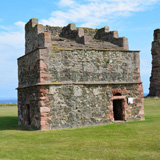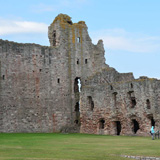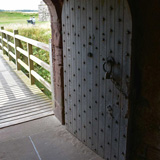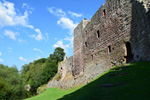History
In 1354, William Douglas was given the estates of his father, Sir Archibald Douglas, and his uncle, the "Good Sir James Douglas", a close friend of Robert the Bruce. Part of these estates included the barony of North Berwick. In 1358, William was made Earl of Douglas by David II. By this time, stone masons had already begun the construction of Tantallon Castle for William.
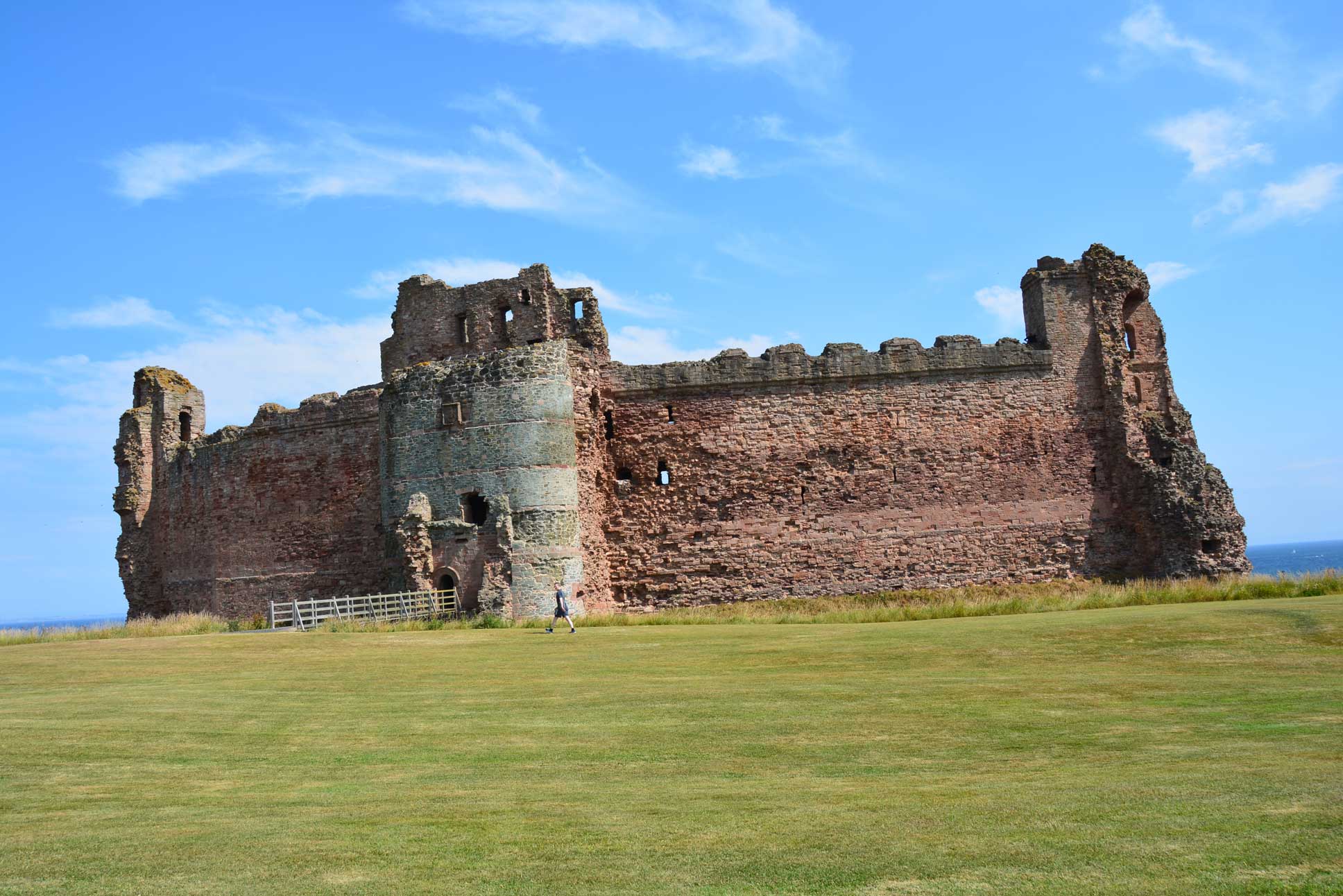
William's son, George Douglas, became the 1st Earl of Angus, and the first of the Red Douglases when the family was split into the Black and Red factions. George married Mary, the second daughter of Robert II. George was captured at the Battle of Humbleton in 1402 and died the following year. James, the 3rd Earl, used Tantallon Castle to pursue a vendetta against the rival faction of the family. His brother George, later the 4th Earl, and King James II's army routed the Black Douglas forces at Arkinholm in 1455, from which George was rewarded with the lordship of Douglas.
In 1460, James II was killed at the siege of Roxburgh Castle when one of his cannons exploded nearby. George, the 4th Earl of Angus, had the privilege of placing the Scottish crown on James III's head at Kelso Abbey.
The 5th Earl, Archibald Douglas, or Bell the Cat, hanged some of James III's favorites from the bridge at Lauder. He also entered into a treasonous pact with Henry VII of England. This led to James IV besieging Tantallon Castle in 1491, using crossbows and culverins (small cannons) in the attack. Archibald died in 1513, and his two sons were subsequently killed at the Battle of Flodden.
Archibald's grandson, another Archibald, succeeded him as the 6th Earl of Angus. In 1514, he married Margaret Tudor, James IV's widow and Henry VIII's sister. After several questionable ventures, Archibald had to flee to Tantallon Castle for his protection.
In 1528, James V marched on the castle with his troops, who chanted "Ding Doon Tantalloun!" and besieged the castle for 20 days with artillery, but was forced to abandon the attack. Archibald Douglas retired to England, and the castle passed to the king on April 3rd, 1529. When James V died in 1542, the Earl of Angus returned in 1543 and took back possession of the castle.
By 1543, Scotland and England were again at war, and Archibald offered to surrender Tantallon Castle to the English. But Archibald changed sides when the English desecrated the Douglas Tombs at Melrose Abbey and led the Scots to victory over the English at the Battle of Ancrum Moor in 1545.
In 1547, Archibald Douglas and the Earl of Hamilton led the Scots to victory over the English at the Battle of Pinkie. The cannons of Tantallon Castle later participated in a naval battle between the English and French fleets in support of the French. Archibald was admitted to the Order of St Michael, a French chivalric order, as a reward for his loyalty. Archibald died peacefully at the castle in 1556.
In November of 1566, Mary Queen of Scots visited Tantallon Castle during her return to Edinburgh during a trip to the eastern Borders. The 8th Earl of Angus, also known as Archibald, entered even more treacherous agreements with England and was exiled in 1581. He died in England in 1588, reportedly as a result of a spell being cast on him by Agnes Sampson, who was later condemned as a witch by James VI and burnt on Castle Hill in Edinburgh.
In 1650, 30 Moss-troopers based at Tantallon Castle caused such extreme damage to Cromwell's lines of communication that in 1651, Tantallon Castle was attacked by General Monck on behalf of Oliver Cromwell. After 12 days of bombardment, the castle surrendered and was ruined.
The 2nd Marquess sold the castle and the Barony of North Berwick to Sir Hew Dalrymple of Stair in 1699. He made no attempt to repair the castle and it continued to decay. Some repairs and landscaping were finally carried out on the castle prior to a visit by Queen Victoria in Auguts of 1878.
Tantallon Castle moved into state care in 1924 and is now under the care of Historic Scotland.
Castle Highlights
Although in a ruined state today, Tantallon Castle remains an impressive castle; three sides of the castle have eroded into the sea. The fourth side is protected by a ditch about 20 feet wide. The castle's outer bailey still contains a Dovecot, once used to house pigeons and doves for food. The pigeons were also used for communication over long distances.
The remains of the castle consist of a central tower and two corner towers connected by a 50-foot-high rampart wall. The Douglas Tower once stood six stories high and was once circular. Today, it's mostly just the tower's inner wall that remains. The East Tower stands on the other end of the ramparts. It stood five stories high and originally had wooden floors, which gave way to stone vaulted ceilings.
The Gatehouse Tower contained four floors of residential rooms above a room that contained the portcullis mechanism. The tower also contained a drawbridge mechanism for raising and lowering the bridge over the ditch. Additionally, the gatehouse included a barbican in front of the tower, projecting into the ditch for enhanced protection.
You can spend up to half a day exploring Tantallon Castle. You can visit nearby Dirleton Castle or Hailes Castle for a full day of castle-seeing.
Tantallon Castle is also haunted.
